22. Cubes
Mar 29, 2021
Measuring Performance
of a message passing system
There are 3 factors to consider:
- (1) message delay = latency
- (2) number of messages
- (3) local computation
Time in a message passing system means = message delay + local computation
- broadcast latency is
- delays vary by algorithms (measured as
- ABD performs 1 round communications (2 delays/round)
- ERATO takes 1.5 rounds (3 delays/round)
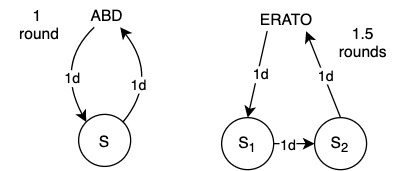
Architectures Comparison
3D Cube
- overhead:
- HW cost:
- Latency:
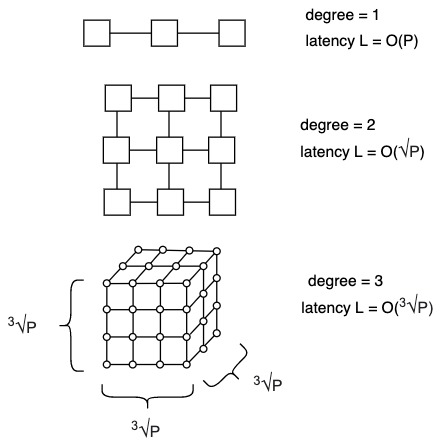
| Wires/P | Wires/Total | |||
|---|---|---|---|---|
| 1 | P | 2 | ||
| 2 | P | 4 | ||
| 3 | P | 6 | ||
| P |
How small can
When
Must be at least
Hypercube
| d | P | name | |
|---|---|---|---|
| 0 |  |
empty string |
|
| 1 |  |
0 ... 1 | |
| 2 | 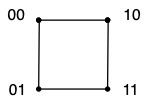 |
00 ... 11 | |
| 3 | 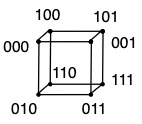 |
000 ... 111 |
Any hypercube is a multidimensional grid; not all grids are hypercubes.
Hypercube is logarithmically efficient for simulation:
- great in proctice
- cost in scalability
- number of wires is
- need to add ports to connect processors
Length of node name is
Cube-Connected Cycles

Hypercube of P nodes
- number of wires is not dependent on P anymore.
This works in other dimensions for hypercubes e.g. 8 node hypercube becomes 24 nodes. Number of wires per processor is 3.
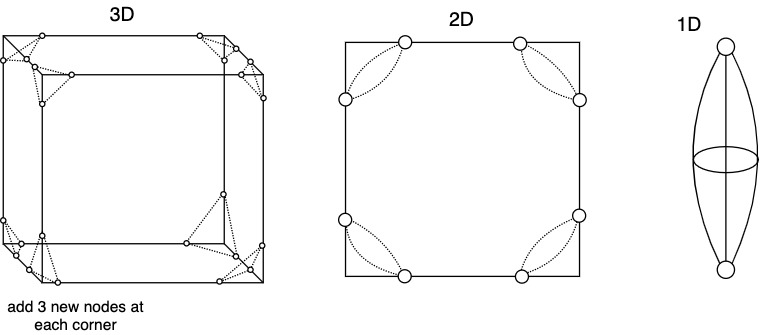
Routing is more complicated now, e.g. routing from 000 to 111
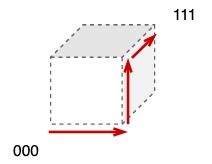
- diameter of graph: max of any distance between two nodes
- diameter of hypercube =
- diameter of CCC =